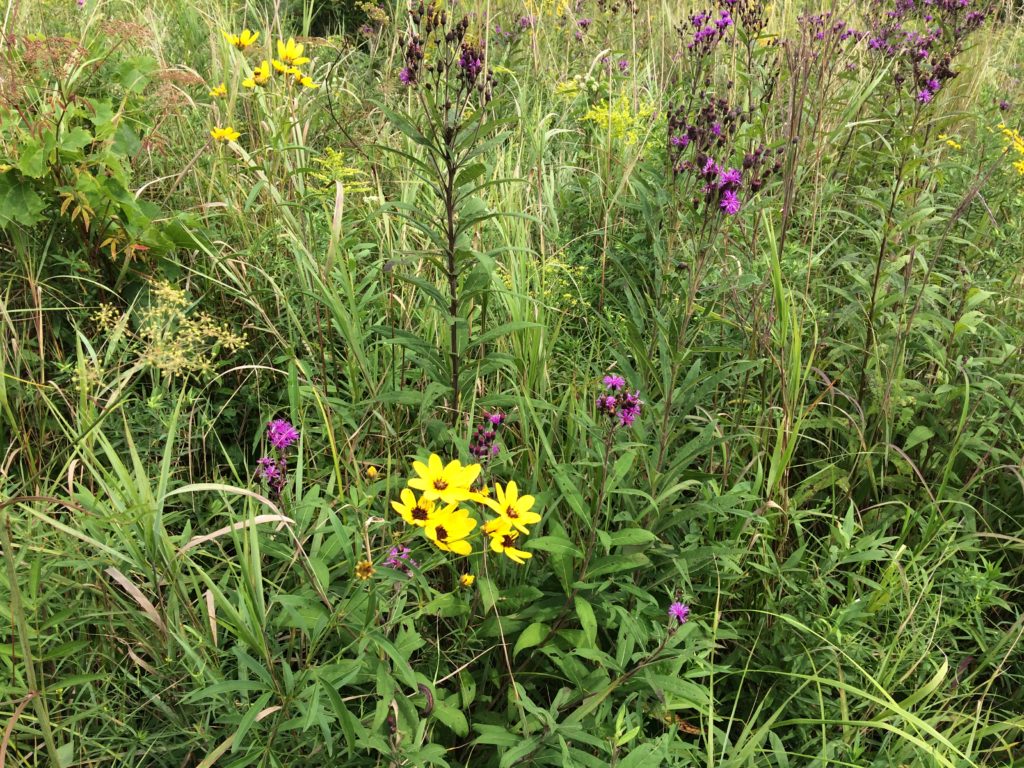by Janet Sumner and Dave Pearce

Nature’s diversity is the key to its resilience. Our quality of life and existence depend on nature. Nature uplifts and provides regeneration for the human spirit.
Every breath we take is filtered by natural processes in oceans, lakes, grasslands and forests. The fresh water we drink is cleaned by wild flora and fauna as it trickles through vegetation and soils to wetlands and rivers. Wild pollinators (mostly insects) are necessary for most of our food crops. Every two-by-four in our homes comes from nature.
Yet, despite this, more than 200 wildlife species are in danger of being lost in Ontario. Why is this happening? Because we have left no room for nature. At this point we have less than 1% of the natural world in regulated protection in Southern Ontario.
An abysmally low level of protection in an area of high natural species diversity with extreme human development pressures have all combined to make Southern Ontario a hotspot for the extinction crisis. Fifty percent of the endangered species in Canada are hanging on by a thread here. The situation is similar in B.C.’s lower mainland, the Prairies, and population centres in Quebec and Atlantic Canada.
Can we fix this? Yes.
We can give nature the room it needs. We can protect what’s important, restore what we need and connect these patches in a vibrant network. A recent Science Magazine article shows that connecting natural habitat patches enhances biodiversity in measurable ways. Whereas the reverse is also true: increased fragmentation leads to additional losses of biodiversity in the remaining habitat patches.
What would a nature strategy look like for southern Ontario for example?
It could start in the southwest, in Windsor, on the shores of the Detroit River. Uniting the current archipelago of protection of remnant Tallgrass Prairie parcels under a National Urban Park banner is a gaining momentum. Tallgrass Prairie is the most endangered ecosystem in Canada but also the most resilient to a warming climate. There are over 160 provincially rare species here- more than anywhere else in Ontario. It’s a hotspot within a hotspot. It also is one of the best natural sponges for extreme wet weather, a fact not lost in a city where flood insurance is almost impossible to obtain and basement flooding is an annual event.
We could also move to secure and restore more of the Carolinian forest zone that stretches from Windsor along the shores of Lake Erie, through Hamilton, around Lake Ontario to the Rouge National Urban Park. Expanding protection from Cootes Paradise, a significant migratory bird layover at the toe of Lake Ontario, to the escarpment is one example of what can be done.
In London, Kitchener, Waterloo, Guelph, and the surrounding regions, restoration projects and local stewardship initiatives are nurturing more habitat for wildlife through land purchases and partnerships with farmers, municipalities and others. From woodlot owners to homeowners there is a role for everyone to help bring our natural world back.
Clearly there is amazing work being done. But will we protect the remaining patches of nature and restore connections on a large scale? Recently, we asked a group of over 20 organizations if it was possible to create a corridor of protection from the Greenbelt to Algonquin Park and from Georgian Bay to the Kawarthas. The answer was yes! If we dare to imagine connecting the Greenbelt to Algonquin will we re-imagine a new nature vision for Canada?
One tool to crack open the possibilities could be National Urban Parks. After all, a key reason why an otter or a deer is able to move from Lake Ontario in Scarborough to Lake Simcoe and beyond is the establishment of Rouge National Urban Park. Thanks to a diverse group of grassroots and conservation organizations, governments of all levels and stripes, today there is an open land corridor between Lake Ontario and the Greenbelt managed by Parks Canada.
What if we had similar nodes and linkages across the country? Around Birch Cove Lakes in Halifax or Gatineau Park in the National Capital Region? What about Montreal, Saskatoon, St. John’s, Calgary, Edmonton and Vancouver? To take hold, National Urban Parks need the right blend of ecological opportunity and community support.
Windsor seems to have the right mix: strong local advocates from the grassroots on up support a National Urban Park to enhance existing protection of the Tallgrass Prairie; an iconic and threatened ecosystem; opportunities for connections to the wider landscape; and desperate need for flood control. Maybe Windsor is the right place for the next National Urban Park. We need a Nature Strategy for southern Canada. Let’s start where the extinction crisis is the most extreme and give nature some room.

